 |
Did you know that microorganisms can live far up in the clouds and deep in the Earth’s crust? They live in our stomach and gut. Some even live under the ice of the Antarctic, or in volcanic rocks and hot springs. These tiny organisms have adapted to all special habitats and conditions. They can be found at extreme temperatures, both hot and cold, in the extreme salinity of the Dead Sea, in nuclear reactors, under the high pressure of the deep sea in dry deserts and in acidic and basic lakes. Although many of these extreme conditions are toxic to most other life forms, some organisms have evolved ways to resist the harsh conditions and survive. |
||||
| Bacteria | Cyanobacteria | Diatoms | Fungi | Mycobacteria | |
- Metabolic flexibility : change the foods they ate, depending on what is available or to changing conditions
- Dormancy : in unfavorable conditions some MO enter in a state of dormancy = slow down of metabolism
- Spores : in unfavorable conditions some MO can form a special layer around themselves made of extraordinary proteins = spores
- Repair mechanisms : some MO have evolved special repair mechanisms to fix nucleic acid damage
- Heat resistance : some MO have special proteins and lipids that protect from very high temperatures
- Radio-resistance : some MO produce extraordinary pigments that serve as a protective shield against gamma-rays
- …
Extremophiles can survive in these harsh environments because they have molecular tools called enzymes, which help them to perform important chemical reactions. While all organisms have enzymes, those of extremophiles are adapted to work under the extreme conditions in which they live, so we call those enzymes extremozymes.
Bacteria
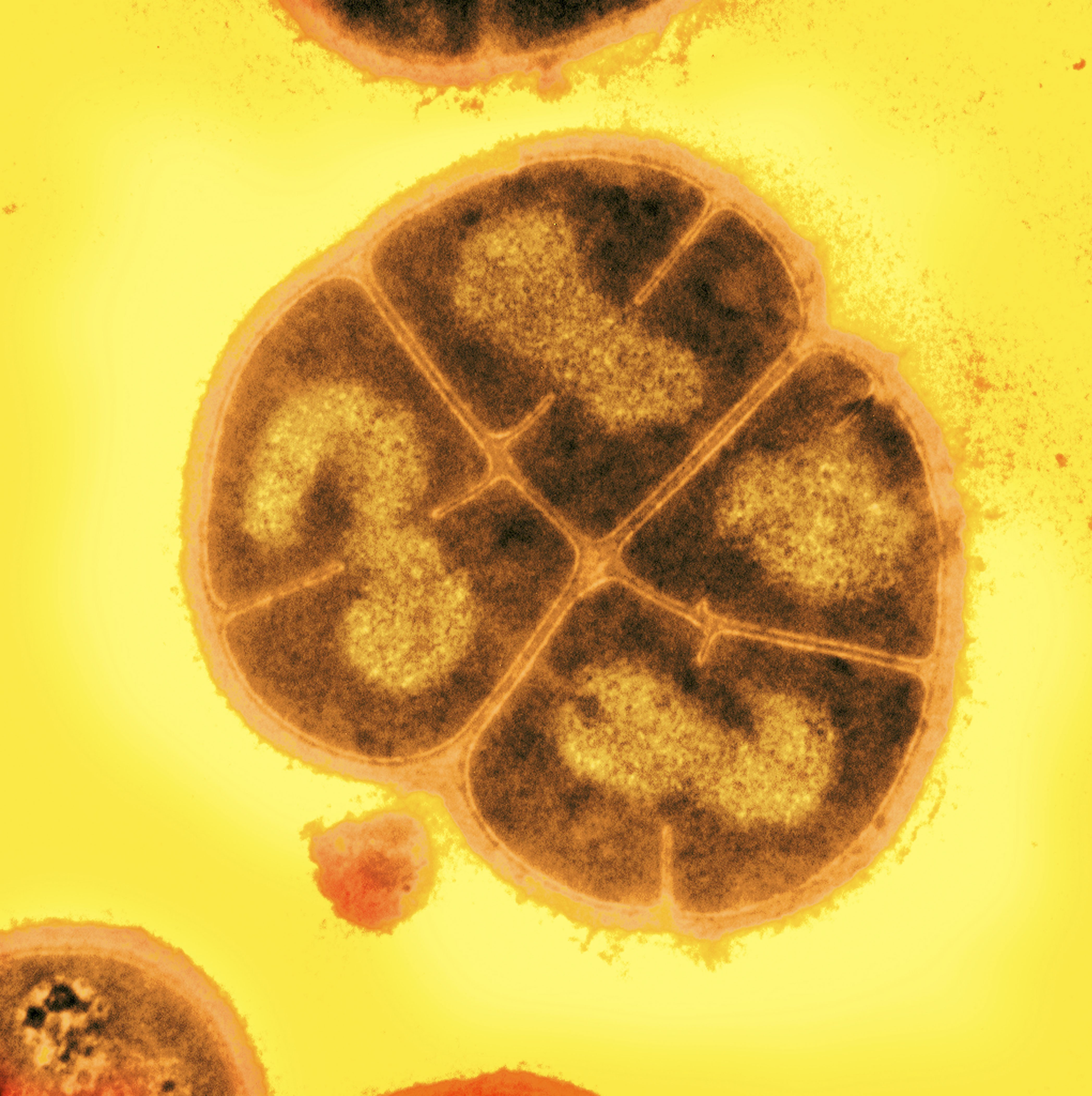
Deinococcus radiodurans (LMG 4051T)
Deinococcus radiodurans is an extremophile bacterium known for its extraordinary resistance to radiation and other environmental stressors. It was first discovered in 1956 by Arthur W. Anderson and colleagues and has the following mega-powers:
- able to withstand extremely high levels of radiation, up to 5,000 Gy (gray) ionizing radiation, which is thousands of times more than what is lethal to most other organisms. This is due to its ability to repair DNA damage from radiation more efficiently than other bacteria.
- can survive extreme dehydration (desiccation) for long periods of time, thanks to its ability to repair DNA damage and maintain membrane integrity even in the absence of water.
- has multiple copies of its genome (up to four), which allows for more efficient DNA repair in the face of radiation and other stressors.
Overall, Deinococcus radiodurans' remarkable superpowers against environmental extremes has made it an important model organism for studying DNA repair mechanisms and for potential applications in bioremediation and other areas of biotechnology.
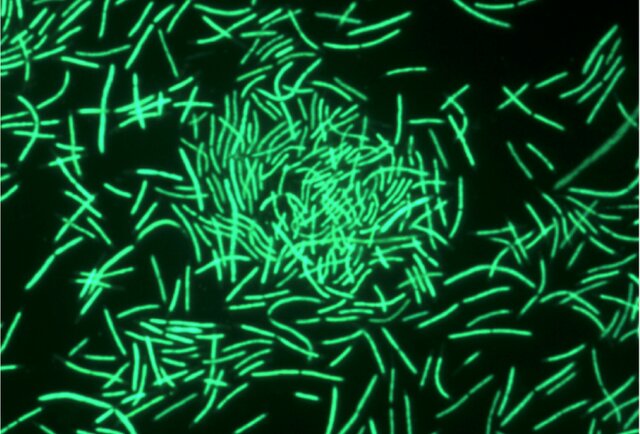
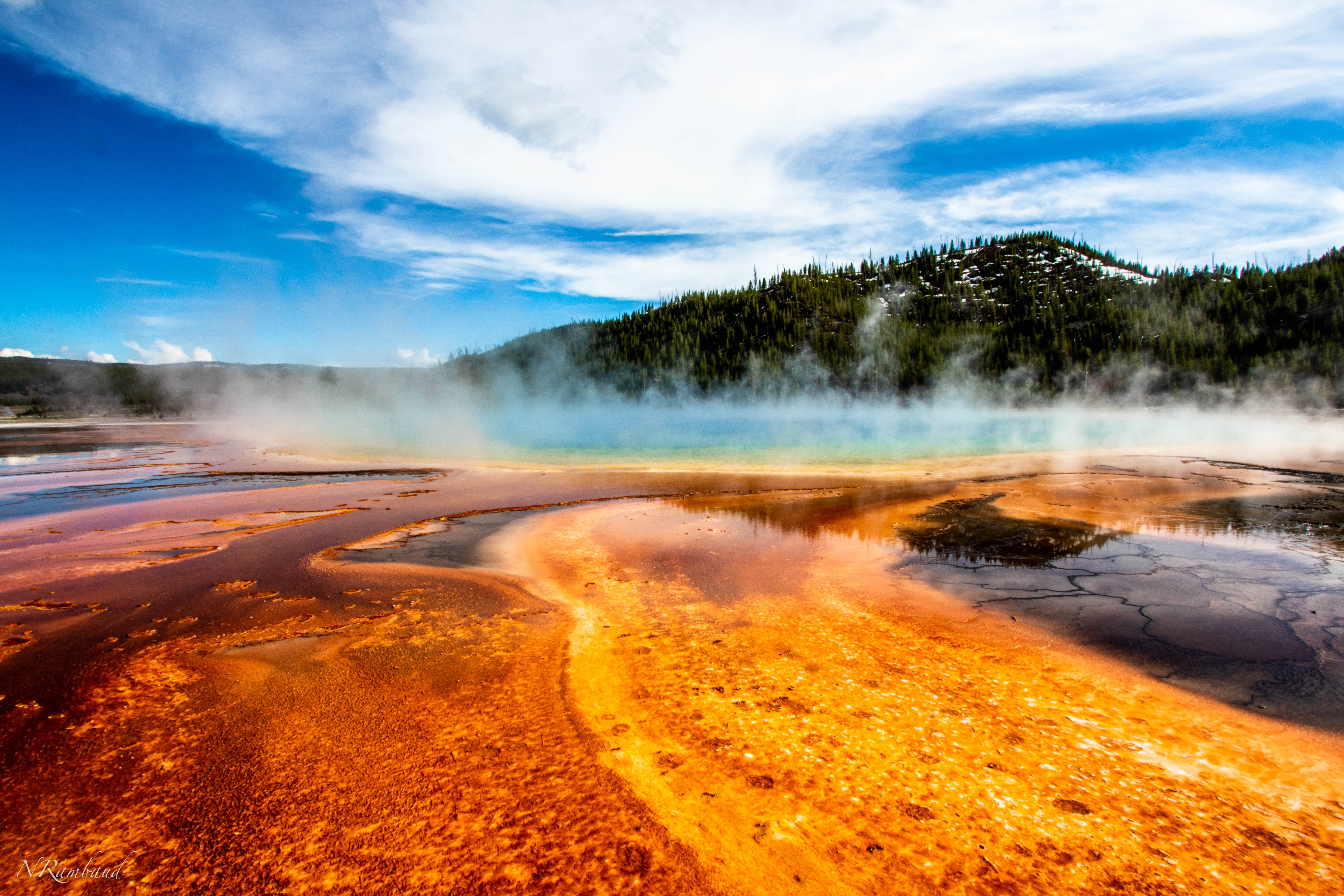
Thermus aquaticus (LMG 8924T)
Thermus aquaticus is found in hot springs and geysers. It is best known for its ability to produce the heat-stable Taq polymerase enzyme, which is widely used in the polymerase chain reaction (PCR) technique for amplifying DNA.
During the summer of 1969, a group of researchers from Indiana University explored the hot springs of Yellowstone National Park, looking for microorganisms that could survive in extreme environments. One of these researchers - microbiologist Thomas D. Brock - was interested in studying the thermophilic bacteria that lived in the hot springs. One day, when he was collecting samples from a hot spring near the Old Faithful geyser, Brock noticed something unusual. The water in the spring was boiling hot, but a slimy layer was growing on the rocks and tree trunks at the edge of the spring. Intrigued, Brock collected a sample of this slime and took it to the lab where he isolated from it a new species of bacteria he named Thermus aquaticus. He soon realised that this bacterium was unlike anything he had seen before: it could grow at temperatures of up to 75°C!
It was not until the 1980s that the true value of Thermus aquaticus became clear. In 1983, a group of researchers at Cetus Corporation, a biotechnology company in California, were trying to develop a new method of multiplying DNA. While Kary Mullis, a chemist working at Cetus, was driving home from a bar, he devised a hypothetical technique, which he called the Polymerase Chain Reaction (PCR), in which DNA is successively heated and cooled to replicate it in large quantities. In this reaction, the DNA is first heated to about 95°C so that the two strands that make up the DNA split apart. In the next step, a 'polymerase' enzyme will copy the single-stranded DNA. Repeating these steps creates a chain reaction that produces enough DNA to study. Initially, however, they struggled to find an enzyme that could withstand the high temperatures and temperature fluctuations required for this process. Then Mullis remembered reading about Thermus aquaticus and its heat-resistant enzymes. He suggested isolating the DNA polymerase from T. aquaticus and using it for the PCR process and found that it worked perfectly.
PCR makes it much easier to study DNA so that many genetic diseases can be accurately and early identified
The discovery of T. aquaticus polymerase (often abbreviated as 'Taq polymerase') and the PCR technique revolutionised molecular biology. PCR makes it much easier to study DNA so that many genetic diseases can be accurately and early identified, people can be identified in forensic science, genetically modified organisms can be developed and much more. For the discovery of PCR, Mullis received the Nobel Prize in Chemistry in 1993.


Vibrio natriegens (LMG 10935T)
Vibrio natriegens is a remarkable species of bacteria that thrives in some of the most extreme environments on Earth, such as salt flats and saline lakes. These habitats pose significant challenges to most forms of life due to their high salt concentrations, but V. natriegens has gained special adaptations that allow it to flourish. This bacterium is therefore a subject of significant interest in scientific research, shedding light on the boundaries of life's adaptability.
Moreover, Vibrio natriegens has the fastest growth rate of any known organism, with a reported doubling time of less then 10 min, making it a world record holder. This characteristic has garnered significant attention in biotechnological and industrial applications due to its potential for accelerating various production processes.

Cupriavidus metallidurans CH34 (LMG 1195T)
The use and usefulness of bacteria on Earth is vast and unquestionable. Likewise, these microorganisms can also assist in the operation on other planetary surfaces like Mars. They could be used to extract useful minerals from extraterrestrial rocks, thereby limiting the material volume to be transported.
Cupriavidus metallidurans CH34 has the ability to tolerate and even metabolize a wide range of heavy metals and is therefore studied for its behavior under altered gravity in the International Space Station (ISS). BCCM/LMG developed a freeze-drying method on basalt slices to keep the bacterium in a dormancy state from rocket launch until arrival at the ISS.
The first batch of 15 basalt slides was successfully launched on July 26th 2019 at 12:01 AM CEST from NASA Kennedy Space Center, with a SpaceX Falcon 9 carrier rocket. All freeze-dried C. metallidurans cultures on basalt slides showed viability upon rehydration, 408 km above earth.
Cyanobacteria
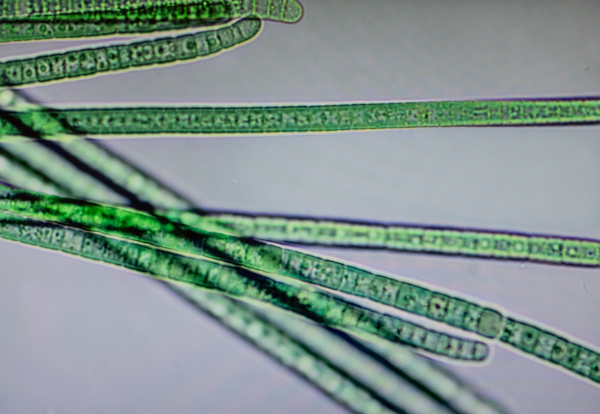
Antarctic strains and cold resistant mechanisms
Cyanobacteria are known for their ability to thrive in diverse environmental conditions. Some strains of cyanobacteria have been found in Antarctica, where they have adapted to extreme cold and harsh conditions. These cold-adapted cyanobacteria are of particular interest due to their unique adaptations and the potential applications of their enzymes in various biotechnological processes. To survive in cold environments, cyanobacteria present adaptations such the production of antifreeze proteins that help prevent ice formation within their cells, as well as the ability to adjust their photosynthetic machinery to function efficiently in low temperatures. These microorganisms also produce enzymes adapted to function at low temperatures. These enzymes are often referred to as psychrophilic or cold-adapted enzymes and they have evolved to remain active and efficient in the cold conditions. This strategy has potential applications in various industries, including biotechnology and pharmaceuticals. The so-called “Cold-resistant enzymes” can be used in processes that require low-temperature activity, such as the production of cold-active detergents, the food industry (e.g., for dairy and brewing applications), and molecular biology
Diatoms

Chaetoceros elegans (DCG 0529)
The past can teach us much about the present, but also about the possible direction of our planet’s future. Fossils can teach us a lot about evolution however, reviving fossils sounds like an idea originating from pure fiction. In actuality, this is much closer to reality than most people realise. Some diatoms can form resting spores, which can be found in layers of sediments dating thousands of years back. Resting spores are formed during harsh, stressful environmental conditions as a means of surviving until conditions are more favourable. The resting spores of these species can thus tell us a lot about the environment from the past. Not only that, but in contrast to dinosaur bones, these resting spores can be revived and brought back into culture as living cells. Through analysis of the DNA of these living fossils, we can learn a lot about microevolution. For example, resting spores of diatoms of the genus Chaetoceros have been found in sediments dating back as far as 6600 years and have been successfully brought into culture.
Did you know? These spores have been around since before the Egyptian pyramids!
Fungi
Since the dawn of life, mushrooms have been one of the main factors in the evolution of life on earth. They ate the rocks that created the soil and they fed the plants that made the planet green. Mushrooms brought life back to earth after every planetary catastrophe. Fungi have survived the Earth's five mass extinctions, each of which has resulted in the disappearance of 75% to 95% of the planet's species. Some fungi even thrived during these times of calamity.
Mushrooms are everywhere, but it's easy to miss them. They are in you and around you. They tend to live hidden, more than 90% of species have not yet been recorded. Rare are the places in the world where fungi are not found: from marine sediments on the surface of deserts, from the icy valleys of Antarctica to our intestines and orifices, they are omnipresent...

Armillaria
Armillaria, here represented by Armillaria heimii, belong to the lamellate mushrooms (Agaricales). They have the particularity of forming structures called rhizomorphs, small cords that extend into the soil in search of a host tree, and that transport for example water. Fungi of the genus Armillaria play an important ecological role in the natural environment; they are important pathogens for trees of our forests, contributing to the recycling of wood and therefore to the carbon cycle.
A Canadian Armillaria specimen of the species A. solidipes (syn. A. ostoyae) is among the largest living organisms on earth with a size of about nine km2. Its age is estimated to 2 400 years and its weight to 600 tons.
Mycobacteria : slow growers
In a world where everything moves at lightning speed, there's a group of bacteria that likes to take it slow. Meet Mycobacteria, the champions of patience! These microscopic creatures have a unique trait that sets them apart: their turtle-like growth. While most bacteria multiply within minutes, it takes mycobacteria hours to days. Some non-tuberculous mycobacteria (NTM) are notorious for their sluggish pace, making snails look like sprinters. It can take days, weeks, or even months for them to form visible colonies in the lab. This slow growth can be a challenge for diagnosing mycobacterial diseases and scientistific experimentse, but extraordinary resilience of these tiny creatures. So, let's take a moment to appreciate mycobacteria, the slow and steady champions of the microbial world!
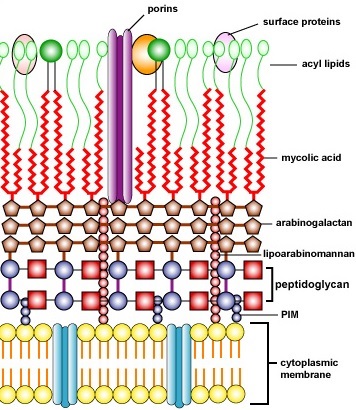
Mycobacteria's epic cell wall stops the unwanted
Mycobacteria possess a unique cell wall called the defender, which is lipid-rich and functions as a formidable permeability barrier. This fortress of fats, consisting of lipids like mycolic acids, protects mycobacteria from environmental stresses and host immune responses. Due to its hydrophobic nature, mycobacteria resist traditional staining methods, such as Gram staining, and are classified as acid-fast organisms, whereby the lipid composition allows mycobacteria to retain the primary stain even after exposure to acid-alcohol decolorization. This distinctive acid-fast staining property is crucial for their identification by microscopy. The barrier not only acts as a protective shield but also influences interactions between mycobacteria and their hosts, impacting pathogenesis and virulence. Understanding the mycobacterial cell wall is essential for developing diagnostic tools and treatments for mycobacterial infections.
Non-tuberculous mycobacteria (NTM) are a diverse group of bacteria that are widely distributed and exhibit an omnipresence in natural and artifical environments worldwide. They can be found in various ecological niches, including soil, water sources, vegetation, and some animals. NTM are resilient organisms capable of adapting to a range of environmental conditions, allowing them to thrive in diverse habitats across the globe. Their ubiquitous presence in natural environments is attributed to their thick, hydrophobic cell wall and their ability to form biofilms, helping them to survive in harsh conditions and resist disinfectants and common antibiotics. As a result, NTM can be encountered in different geographic regions, climates, and ecosystems. While most NTM species are harmless, some can cause infections in humans, particularly in individuals with compromised immune systems. The omnipresence of NTM in the environment highlights the importance of understanding their ecology, transmission routes, and potential health implications to effectively manage and mitigate the risks associated with these bacteria.
